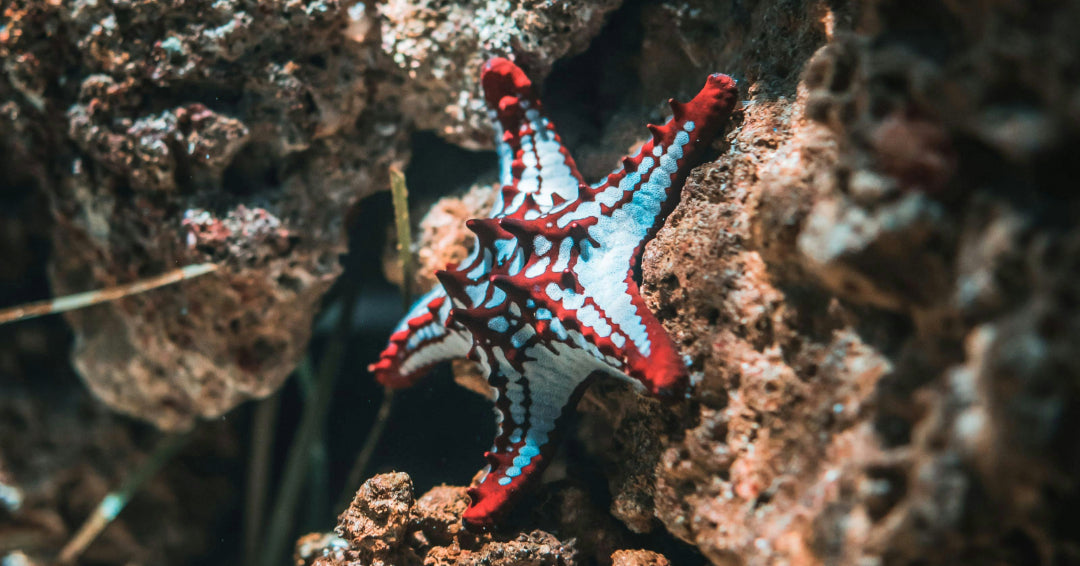Starfish, or sea stars as scientists now refer to them, are beautiful marine creatures that appear in a variety of vibrant colors and textures. Their bodies are intricate works of natural art, perfectly designed so that they can adapt and survive deep in the ocean. They move with incredible agility, through the water and across hard surfaces, avoiding predators while hunting for food. Here are some intriguing facts about starfish that will feed the imaginations of children with a thirst for knowledge about life under the sea.

Starfish Facts Children Will Find Fascinating
Children's books about starfish are filled with interesting illustrations and photographs for readers to explore. They will love reading about the behavior, diet, and survival skills of these mesmerizing sea creatures. Kids who are interested in marine life will enjoy learning more about the habitat deep below the water, where the colorful, multi-limbed sea stars have regenerative powers that seem more like figments from a movie rather than real life. They masquerade through the water and across corral, showing off their breathtaking coloration, and then disappear by camouflaging amongst neutral brown and grey rocks. Here are some facts about sea stars that will pique the interest of kids who love creatures of the deep sea.
Sea Star Anatomy
Starfish, also known as sea stars, have a truly fascinating and unique anatomy that sets them apart from most other creatures. They feature radial symmetry, typically with five arms extending from a central disc. This unique body plan allows them to sense their surroundings and move in any direction. Another remarkable trait is their incredible ability to regenerate lost or damaged limbs. Their tough, leathery outer skin provides excellent protection against predators. Continue reading to learn more about the anatomical features of these interesting sea creatures.

(1) The most familiar sea stars have five arms.
They are echinoderms, a phylum in which a major characteristic is five-point symmetry. Across the 1,900 sea star species, the vast majority have five arms. However, some of the lesser known types can have many more limbs. Scientists have discovered rarer species with a different limb counts across a spectrum. Notably, the sun star boasts a mind boggling forty arms!
(2) Sea stars do not have a brain or blood.
They have a fairly sophisticated, built-in filtration system that pumps sea water through their blood. From this filtered water, sea stars derive all the nutrients to support healthy organ functionality. Also, there is a ring of neurons in the center of a sea star that is like the control center. These neurons do not possess the ability to think like a brain, however, they do send signals to each of the arms so they can move in sync.
(3) Starfish do not have eyes.
Very small spots, usually black or red in color, are located beneath the skin of every arm. These tiny organs do not have visual capabilities like eyeballs. Rather, the spots are photosensitive and allow starfish to recognize shapes of object as they move through the bottom of the ocean. Most importantly, the spots help starfish detect predators and distinguish them from other marine life.
(4) Some starfish can regenerate their entire bodies.
Scientists have discovered rare species that can actually form an entirely new body from a single severed limb. While the arms all connect to a central body, most of the important organs are actually in the limbs. This allows certain species to regenerate a new form when an arm is separated most likely from an unfortunate encounter with a predator.

How Starfish Hunt for Food and Eat
Starfish hunt and eat in a truly unique and surprising way, especially when it comes to their favorite foods like clams, mussels, and oysters. The core of their strategy is stomach eversion for external digestion, making it one of the most fascinating feeding adaptations in the entire animal kingdom.

(5) Starfish are very aggressive predators.
Do not be deceived by the beauty and grace of starfish as they move almost magically through the sea. They have an insatiable appetite, always on the hunt for anything they can suck into their stomachs. Favorite foods include shellfish, algae, and coral. But some species, whether due to excessive hunger or a case of mistaken identity have been witnessed to eat other starfish!
(6) Their stomachs exit the body to eat.
Starfish actually have two stomachs- cardiac and pyloric. Little suction cups all over the body are used to trap the food first. Then the cardiac stomach appears through the mouth to process and digest the food. After this process is finished, the cardiac stomach re-enters the body and returns to its original position until it is time to eat again. In the meantime, the pyloric stomach contains digestive enzymes to break down the food so it can be distributed to the rest of the body.
Sea Star Species and Classification
Sea stars (though often called starfish, scientists prefer "sea star" because they aren't fish) are part of an ancient and fascinating group of marine animals. They belong to the Animalia kingdom, the broadest classification for all animals, which means they're multicellular, get their food by consuming other organisms, and generally can move.

(7) The scientific name is sea star.
Although these five-limbed sea creatures are often referred to as starfish, they are not fish at all. They do not have scales, fins, gills, or any of the other anatomical parts associated with fish. Sea stars, as they should be called, are more closely related to sand dollars and sea urchins. Scientists and marine life educators prefer not to call them starfish because they do not swim or have scales like other fish species.
(8) They are part of the echinoderm phylum.
A phylum is a major group of living creatures that form a primary category in the animal kingdom. Animals that fall under the same phylum have distinct characteristics that set them apart. Echinoderms all have two defining physical features. The first is a water vascular system in which a network of canals fill with water, allowing them to move fluidly and capture prey by extending and retracting tube feet. The second unique feature is five-sided radial symmetry.
(9) There are almost 2,000 different sea star species.
Marine biologists may have a hard time continuing to track the number of starfish species as the list continues to grow. They are found in all parts of the ocean, both in frigid and tropical climates. The most common is the Asterias rubens, which kids can easily identify by the five-arms, spiny bodies, and central disc. These incredible creatures exist in so many colors with varying appendage numbers, lengths, and forms and display an array of feeding and survival tactics depending on where they live in the ocean.

Longevity of Starfish
Sea stars can live surprisingly long for invertebrates, though their lifespan varies significantly based on species, environment, food supply, and disease.

(10) Sea stars live up to 35 years.
Their long survival rate is partly attributed to the fact that they are regenerative. If a limb is severed, it will eventually grow back so that the sea star is again completely able-bodied. The biggest threat to the longevity of a starfish is interference by humans. When they wash up on shallow water and people handle them, sea stars die from suffocation. There are small channels on their body that take in oxygen from water. Removing them from the ocean deprives them of the necessary oxygen to survive.
(11) There are several physical signs that a starfish is dying.
Toward the end of life, a once vibrant body will start to fade until almost all coloration is lost. Their bodies may start to disintegrate and limbs will fall off with no sign of regeneration. Another telltale sign is the loss of suction in the cups that span the bottom of the limbs. If they just hang limply instead of grasping to a surface, it's likely the sea star is nearing death. White dots and a mushy body are also key identifiers of disease that has taken hold.

Share More Facts About Animals With Your Kids






